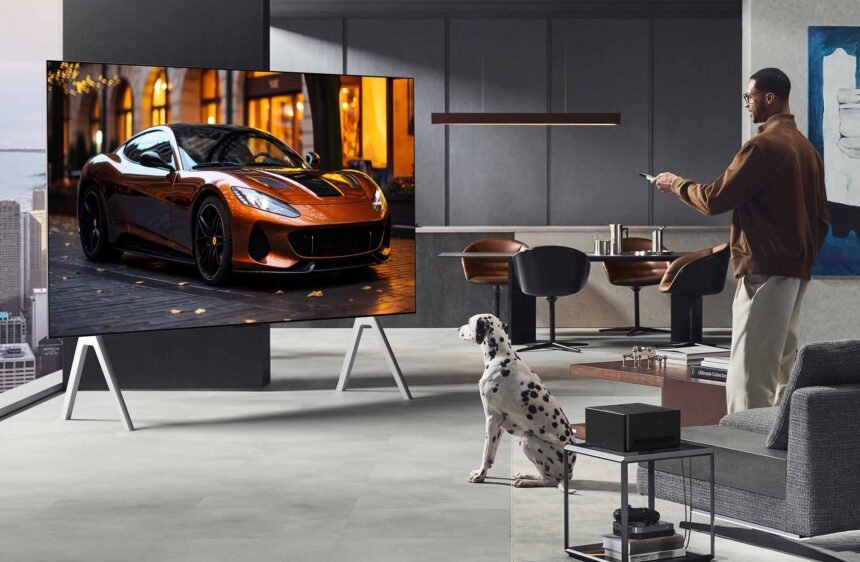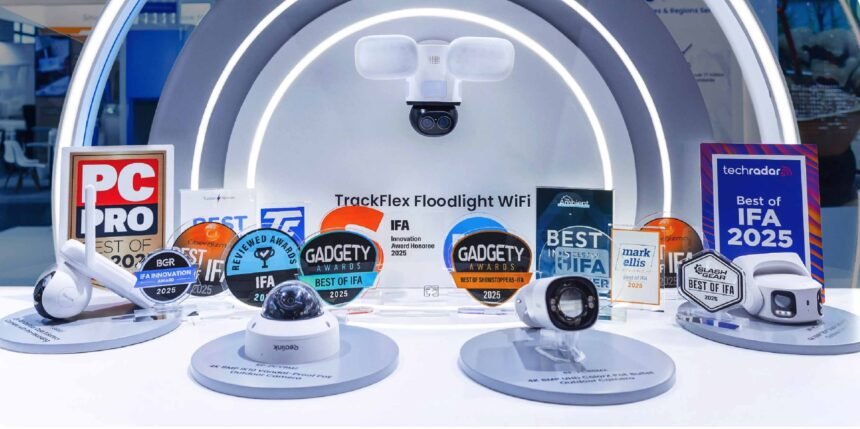LG has revealed its 2025 TV lineup at CES and there’s a big change at the top. The G5, successor to the G4, no longer uses Micro Lens Array or MLA. This was the key to boosting brightness on LG’s top end WOLED panels but not anymore.
LG is using ‘Brightness Booster Ultimate technology’ to achieve brightness – three times higher – than conventional OLED models. In the fine print, LG says this new brightness feature was tested against the LG B5 series in a 10% window.
LG has not revealed what Brightness Booster Ultimate technology actually is … but we do expect answers later in the year. It’s likely to be a four-stack OLED panel behind the improved brightness.

The new LG OLED evo 4K TVs support Filmmaker Mode with Ambient Light Compensation – an advanced version of Filmmaker Mode. It detects the lighting conditions of the viewing environment and automatically adjusts the picture settings to maintain the filmmaker’s original intent. Now this is important because we all have different viewing conditions.
Gamers with powerful PCs will be able to play in 4K with 165Hz Variable Refresh Rate (VRR). The OLED evo TVs are the first to receive ClearMR 10000 certification by VESA.
Powered by the Alpha 11 AI Processor Gen2, the new evo OLED models benefit from Deep learning algorithms that analyse and refine low-resolution and low-quality images. Dynamic Tone Mapping Professional also offers control over HDR10 content for professional creators.
AI Sound Pro delivers virtual 11.1.2 channels of surround sound, adjusting the tonal balance and clarity for an immersive, tailored listening experience. The AI-powered features understand and adapt to a viewer’s audio and visual preferences. It does this by analysing over 1.6 billion image settings and 40 million sound profiles.
There’s a new AI remote, which looks great from my point of view but not all will be happy with the button layout. AI Welcome greets users by name and provides tailored recommendations based on their preferences and viewing habits, while AI Voice ID adds convenience by recognising individual voices, automatically switching profiles, and delivering content suggestions that match personal tastes.







